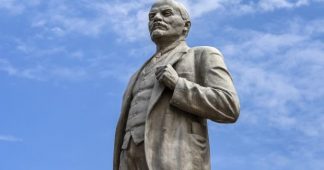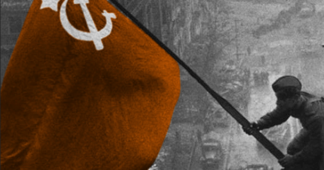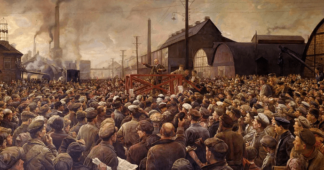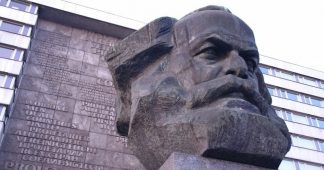Lenin for the New Year
By Dominic Alexander
28 December 2023
As the 100th anniversary of Lenin’s death approaches, here are ten books to help renew the Leninist tradition for the crises ahead, compiled by Dominic Alexander
On 21 January it will be one hundred years since Lenin’s death. While many have tried to bury his legacy and ideas, revolutionary socialists need still to learn the lessons of his leadership of the Bolshevik party, which led to the first workers’ revolution that seized state power. The Russian Revolution was denounced and vilified because its example was a deadly threat to ruling classes across the capitalist world. Lenin has been caricatured and demonised, especially during the Cold War period, to the extent that the reality of his thinking, strategies, and character are little understood, even within left-wing circles. The problem is compounded by the Stalinist-era distortions of Lenin in Russia, created to justify that brutal regime.
If we want to build a socialist organisation that can transform the world, however, we have to understand what lay behind the most successful revolutionary organisation the working class has ever built. To this end, here is a list of books that uncover the real Lenin, and his undogmatic, but principled approach to working-class politics.
- Lars T. Lih, Lenin (Reaktion Books 2011), 235pp. In this short, accessible book, Lars Lih avoids the standard narrative structure of Lenin’s life, which in his view, distorts more than it explains. He nevertheless provides a succinct overview of every stage of Lenin’s life and emphasises how little purchase the myth that ‘Lenin led to Stalin’ has on the historical record. Concluding the book are several observations from contemporaries about Lenin that underline this. His relationship with the Bolshevik Party was captured by Arthur Ransome (yes, the children’s author), who wrote that Lenin gave ‘advice so well reasoned that it is to his followers far more compelling than any command’ (p.212). Lenin was never an autocrat in his relationship with the party.
- Tony Cliff, Building the Party: Lenin 1893-1914 (Bookmarks 1986). Tony Cliff, the founder of the International Socialist tradition, from which Counterfire derives, wrote a four-volume series on Lenin. This first volume follows in detail the process of building the Bolshevik Party up to the outbreak of World War I. Follow the link above to read Chapter 14 of this book online. Cliff’s detailed analysis shows once again how, even though Lenin remained the preeminent leader of the Bolsheviks, this was not achieved through dictatorial means at all, and the democratic internal nature of the party becomes quite clear.
- Neil Harding, Lenin’s Political Thought: Theory and Practice in the Democratic and Socialist Revolutions (Haymarket 2009), 740pp. This is another very useful introduction to Lenin. Unlike most of the other books on this list, it emphasises the changes in Lenin’s thinking, rather than the continuities. These are matters of interpretative debate, but Harding certainly defends the integrity and coherence of Lenin’s analysis, grounded in a sophisticated understanding of Marxism. The whole of the two volumes is available to read online.
- Georg Lukács, Lenin: A Study on the Unity of His Thought (Verso 2009), 102pp. A key chapter on Lenin and the vanguard party can be read on Counterfire. The Hungarian revolutionary, Georg Lukács, a younger contemporary of Lenin, presents a theoretical overview of his thinking. The short book serves also as an introduction to Lukács himself, and is centrally concerned with class consciousness, and how the revolutionary party relates to the working class and develops socialist consciousness through the struggle. The idea that Lenin had an elitist attitude towards the working class, that the Bolshevik Party was a replacement for working-class self-emancipation is not at all historically true, as all the books in this list show, but Lukács demonstrates at the theoretical level how Lenin conceived the interrelationship of party and class.
- Paul Le Blanc, Lenin and the Revolutionary Party (Haymarket 1993), 416pp. Paul le Blanc has written many worthwhile books on Lenin, but this one is probably the most comprehensive and covers the whole of his political life, and all the major controversies, with reflections on the continuing importance and relevance of Leninism.
- Tamás Krausz, Lenin Reconstructed (Monthly Review Press 2015), 552pp. Krausz’s study of Lenin is among the most important in explaining Lenin’s positions and arguments in close historical context. Unlike those who see Lenin as creating something distinct from classical Marxism formulated by Marx and Engels, Krausz shows that Lenin’s ‘work was in fact a defence and a development of Marx’s and Engels’ emancipatory project, often against those who wanted to blunt its radical edge.’ Moreover, what ‘he did was rediscover, reenergise, and deepen elements of the Marxist tradition that mainstream European social democracy was intent on burying’ (p.360).
- Tariq Ali, The Dilemmas of Lenin (Verso 2017), 384pp. A highly readable and entertaining, if idiosyncratic, take on Lenin comes from veteran Marxist and campaigner, Tariq Ali. Ali knows how to write a dramatic story, and here we get more of Lenin’s personal life than in other books, but this is put in the political and historical context, and there are some thoughtful observations the difficulties of the position Lenin and the Bolsheviks found themselves in after the revolution.
- Alfred Rosmer, Lenin’s Moscow (Haymarket 2016). Another way into Lenin and his times is through the many eye-witness accounts of the revolutionary years. Alfred Rosmer was a French syndicalist, but 1917 brought him over to the communists. His years in Russia as a leading member of the Communist International gave him access to the Bolshevik leadership, including Lenin and Trotsky, so this is a vivid and informative memoir of the dramatic early years of the Revolution, and its crises.
- Lenin, What is to be Done? and Lenin, State, and Revolution. Finally, some of Lenin’s major writings are important to read, and quite accessible, even if Trotsky was the greater literary stylist. Lenin’s What is to be Done? is the key text for Lenin’s conception of the revolutionary party, and its key arguments are discussed here. The context and key arguments of State and Revolution, and its importance for contemporary socialist politics, are introduced here.
Also read
Leon Trotsky on Lenin
We remind our readers that publication of articles on our site does not mean that we agree with what is written. Our policy is to publish anything which we consider of interest, so as to assist our readers in forming their opinions. Sometimes we even publish articles with which we totally disagree, since we believe it is important for our readers to be informed on as wide a spectrum of views as possible.











